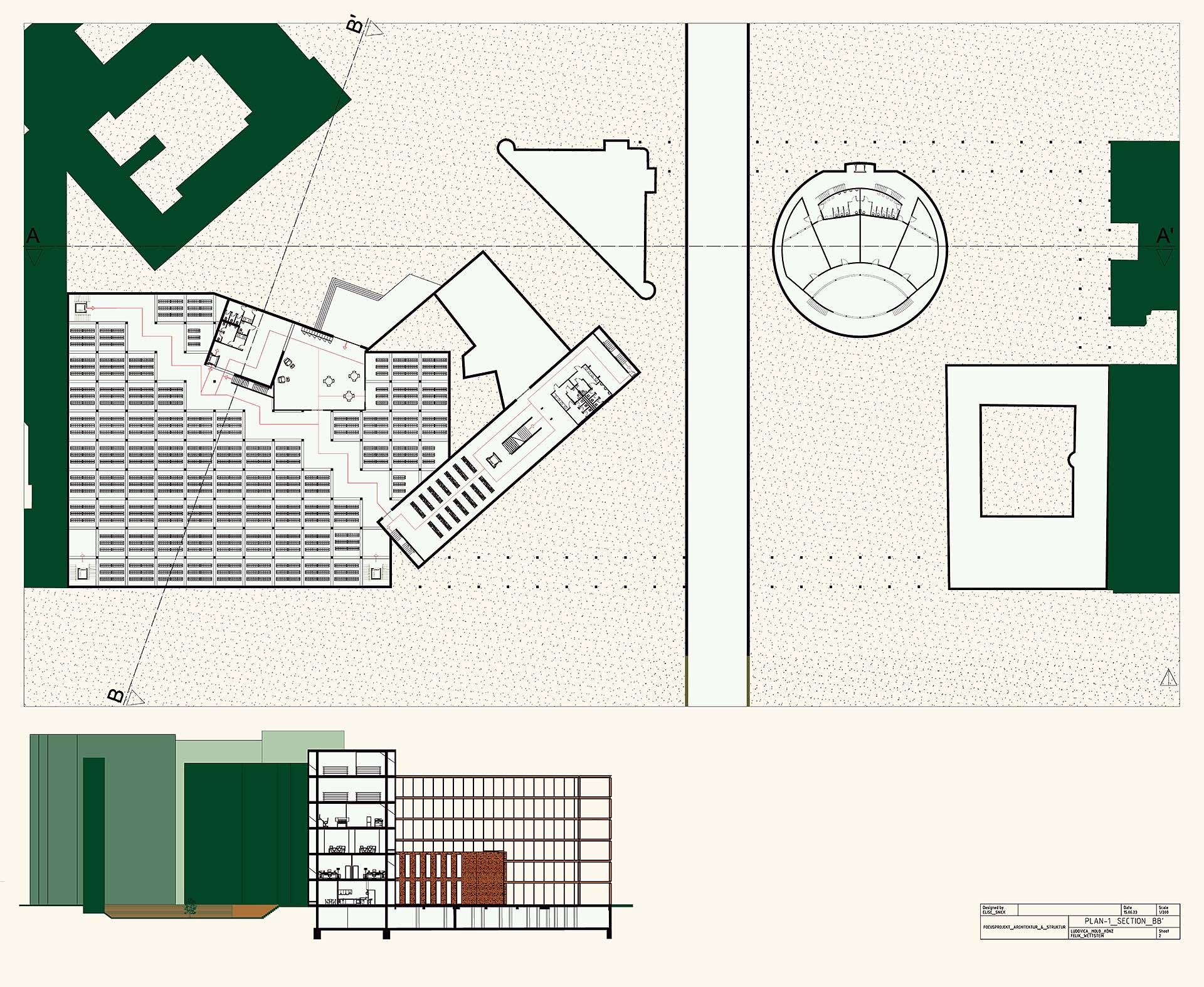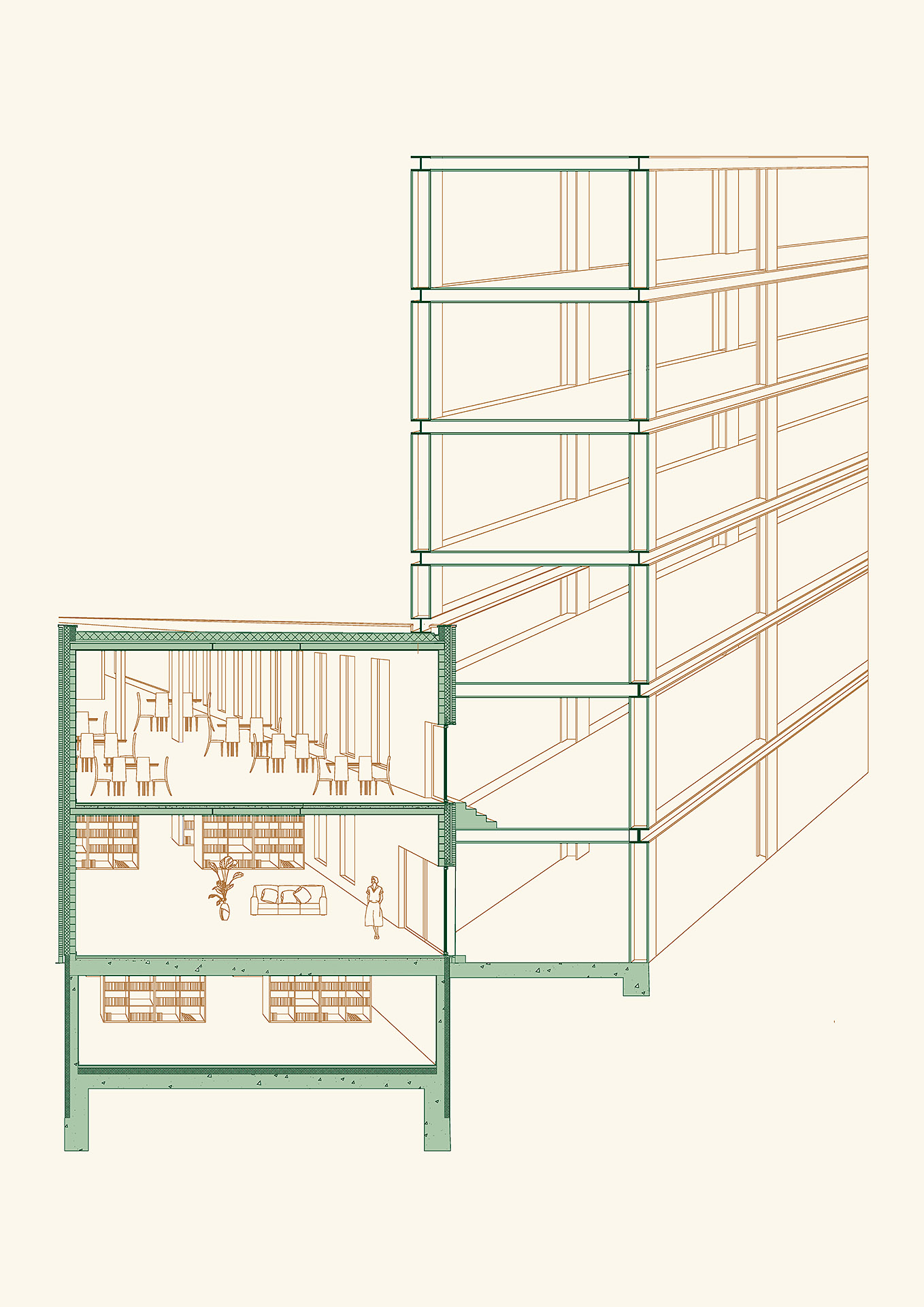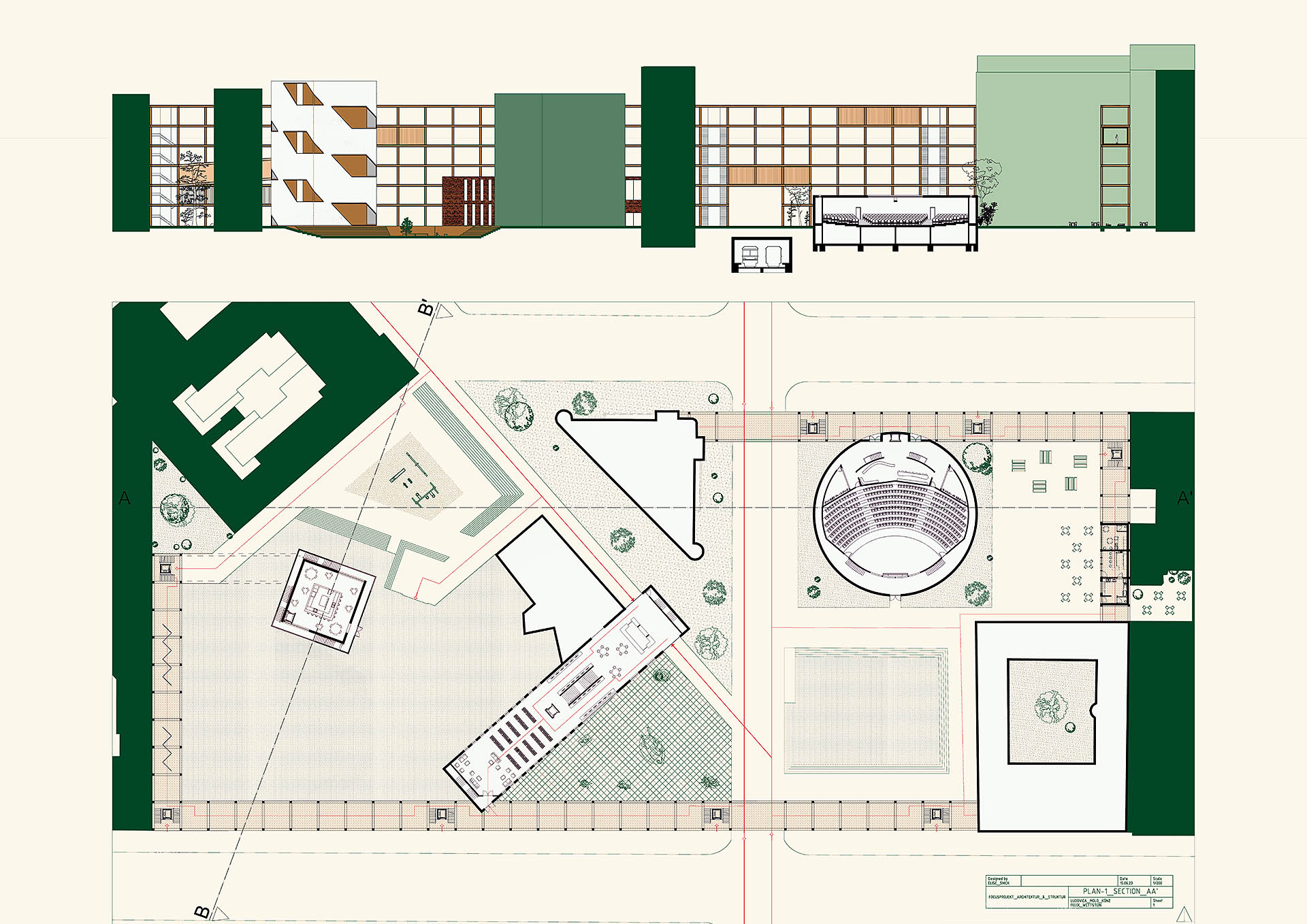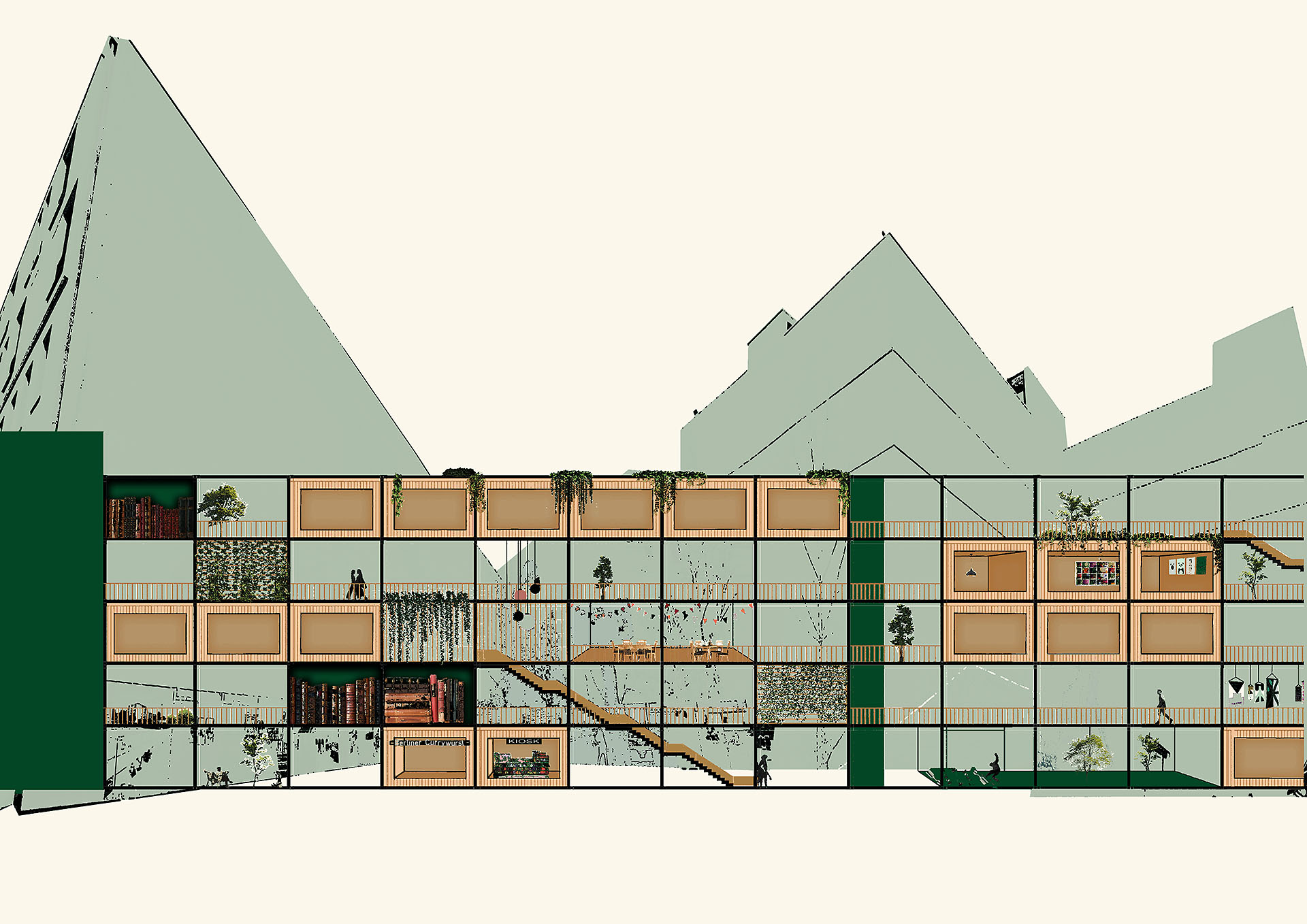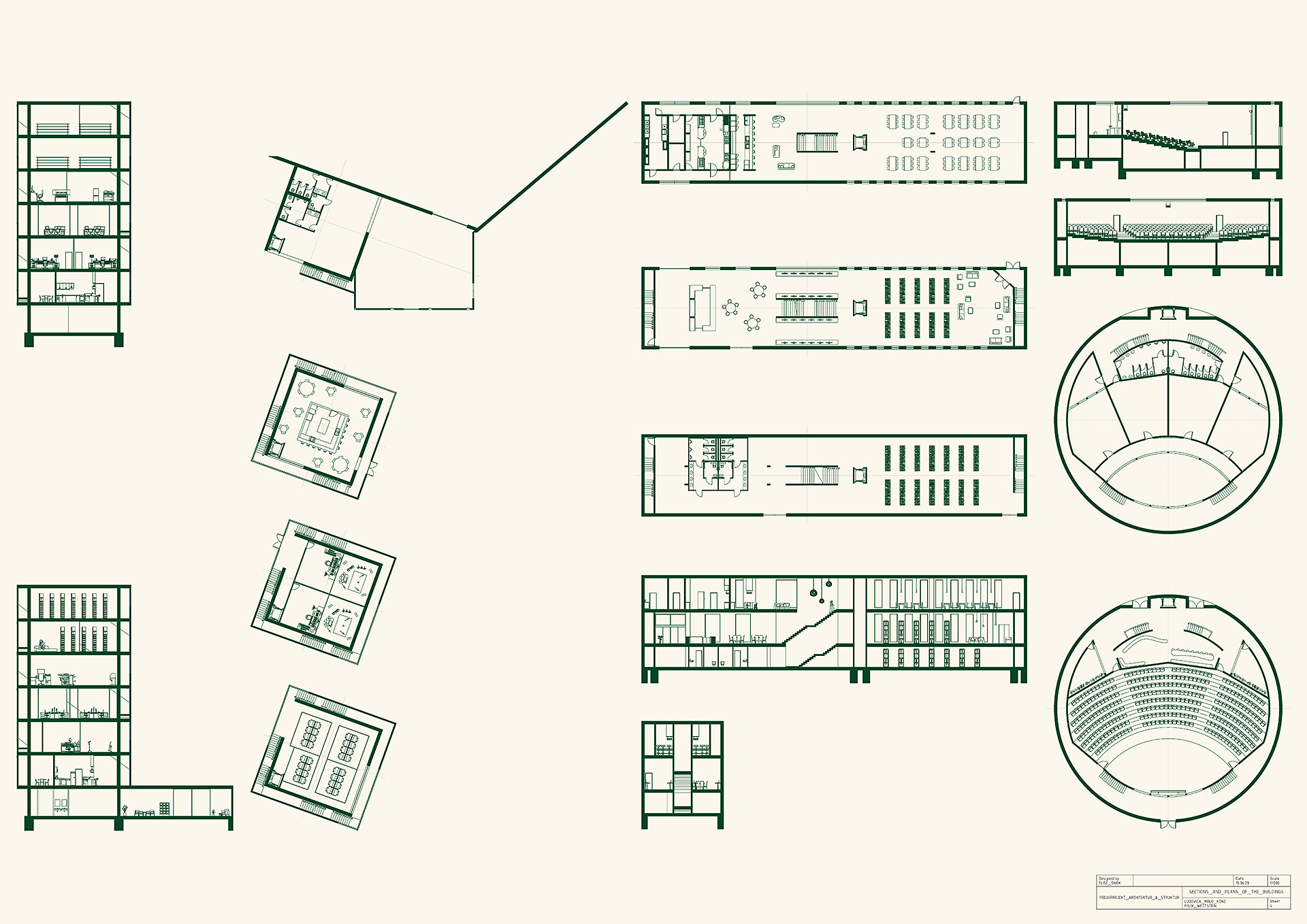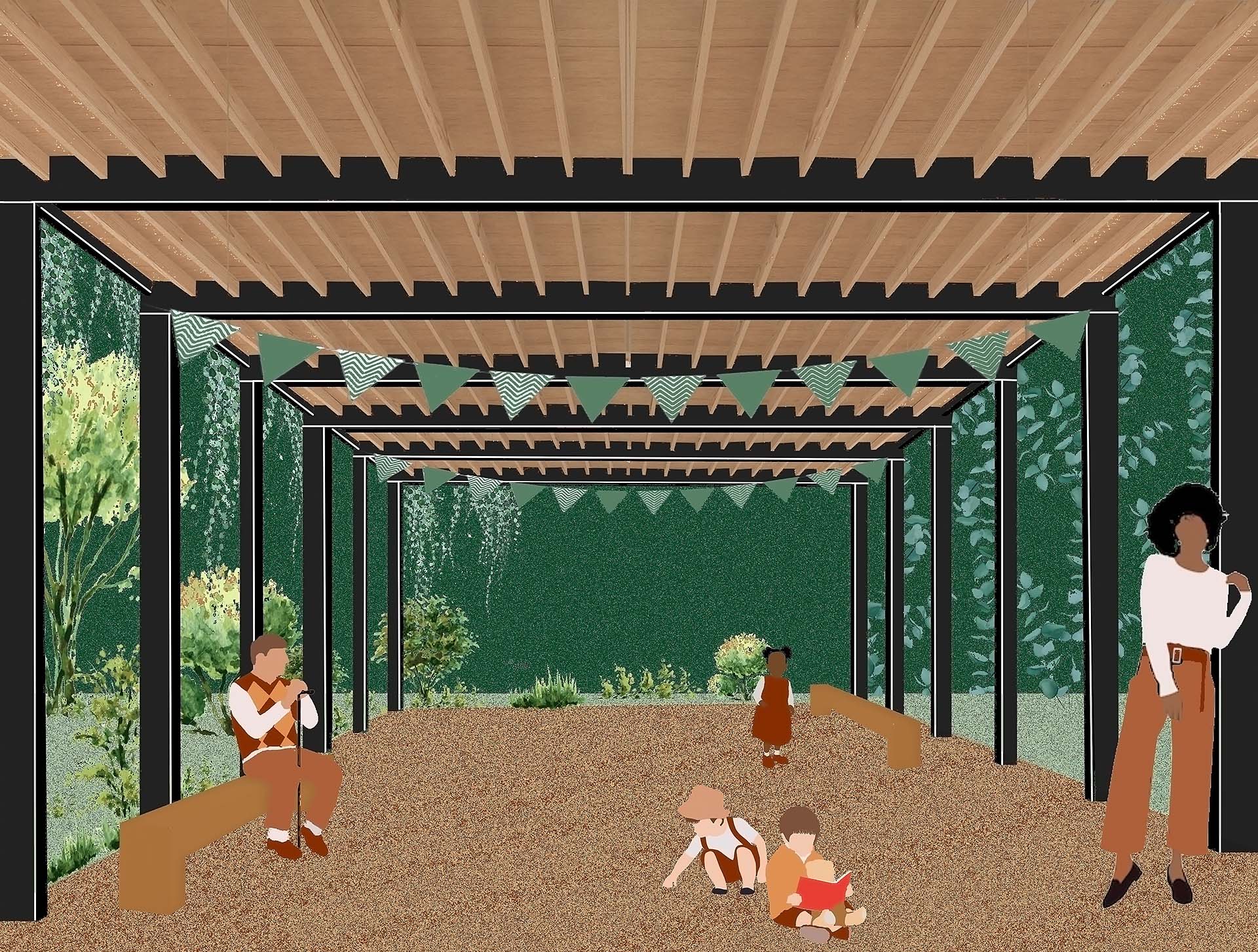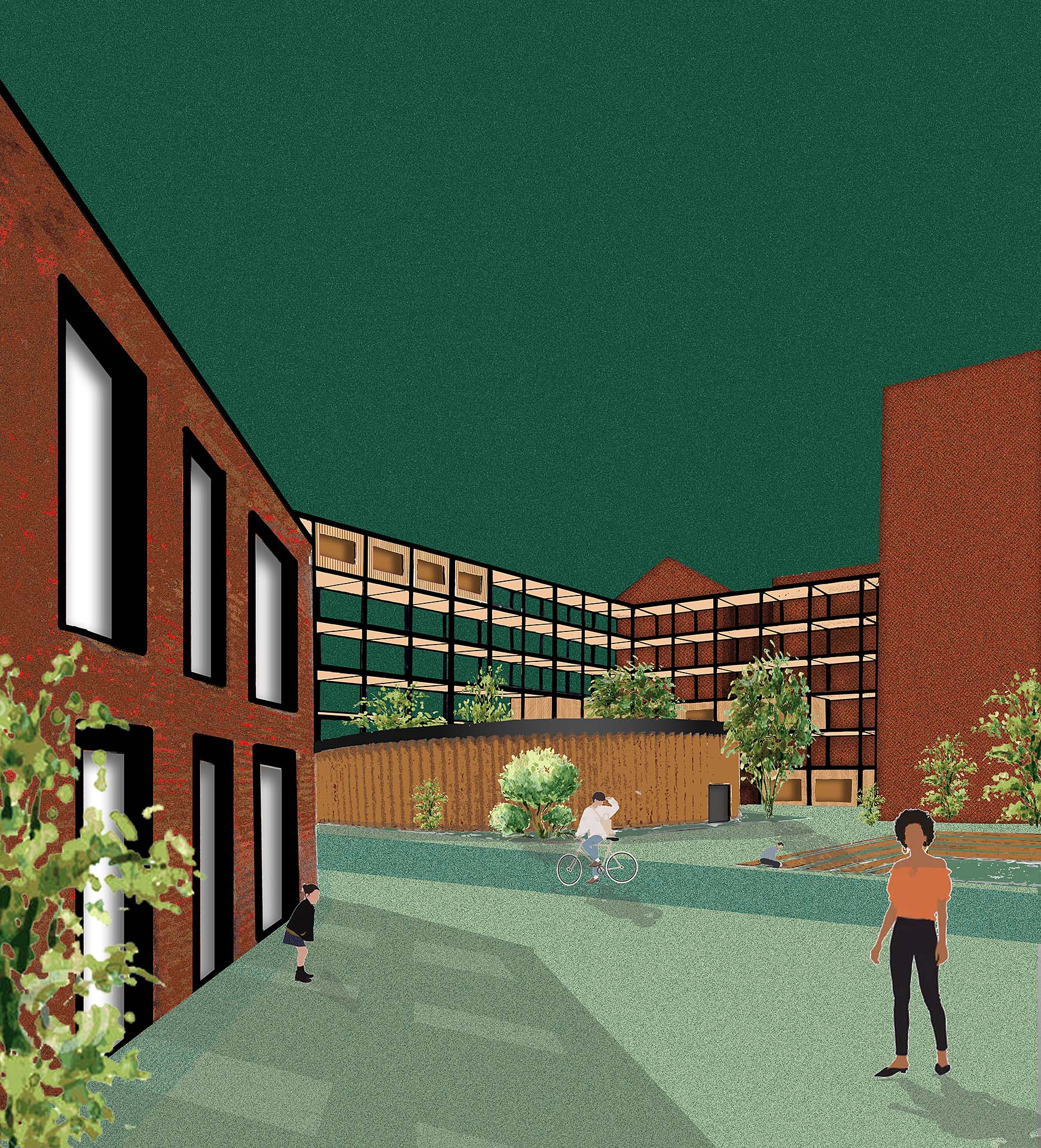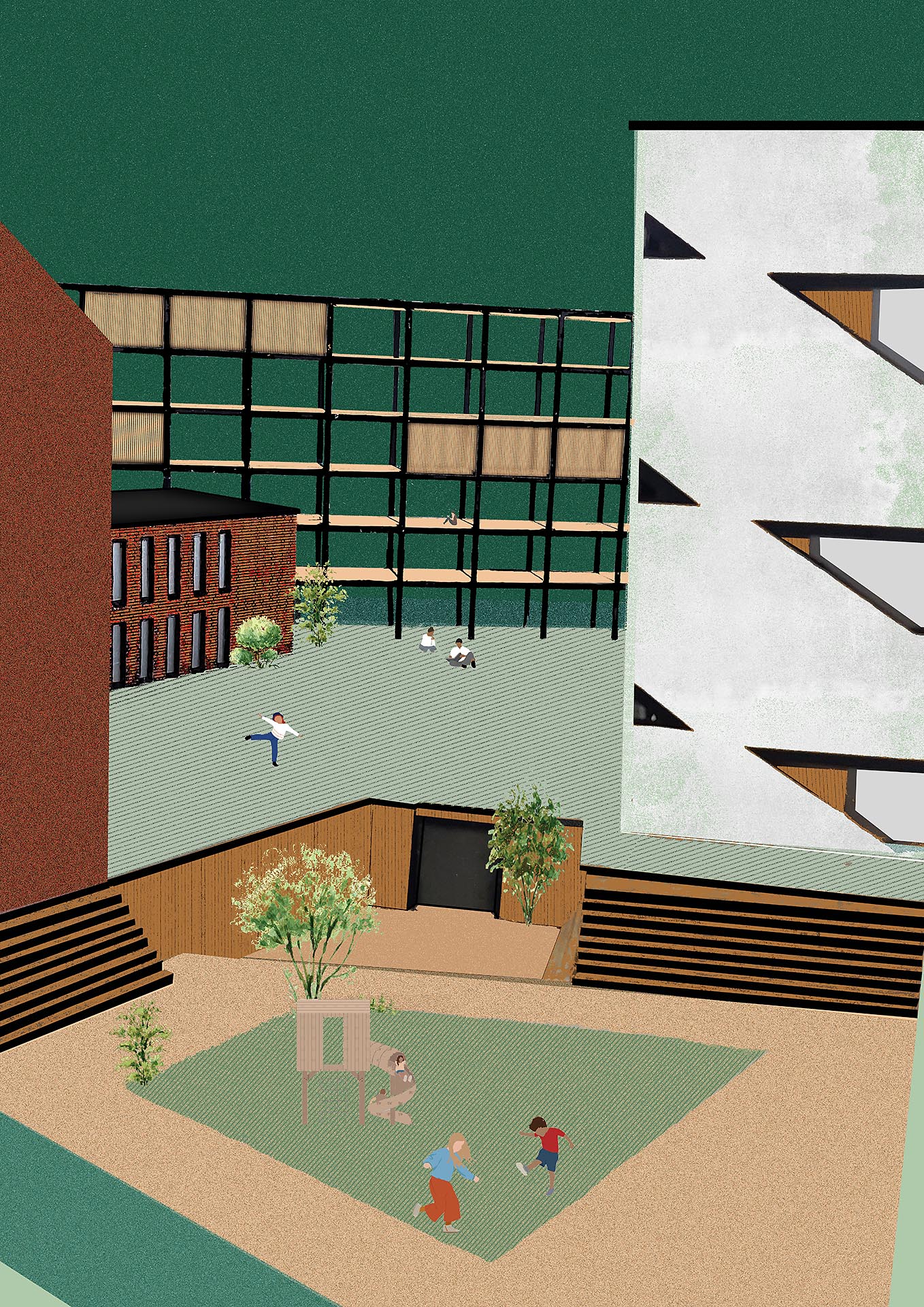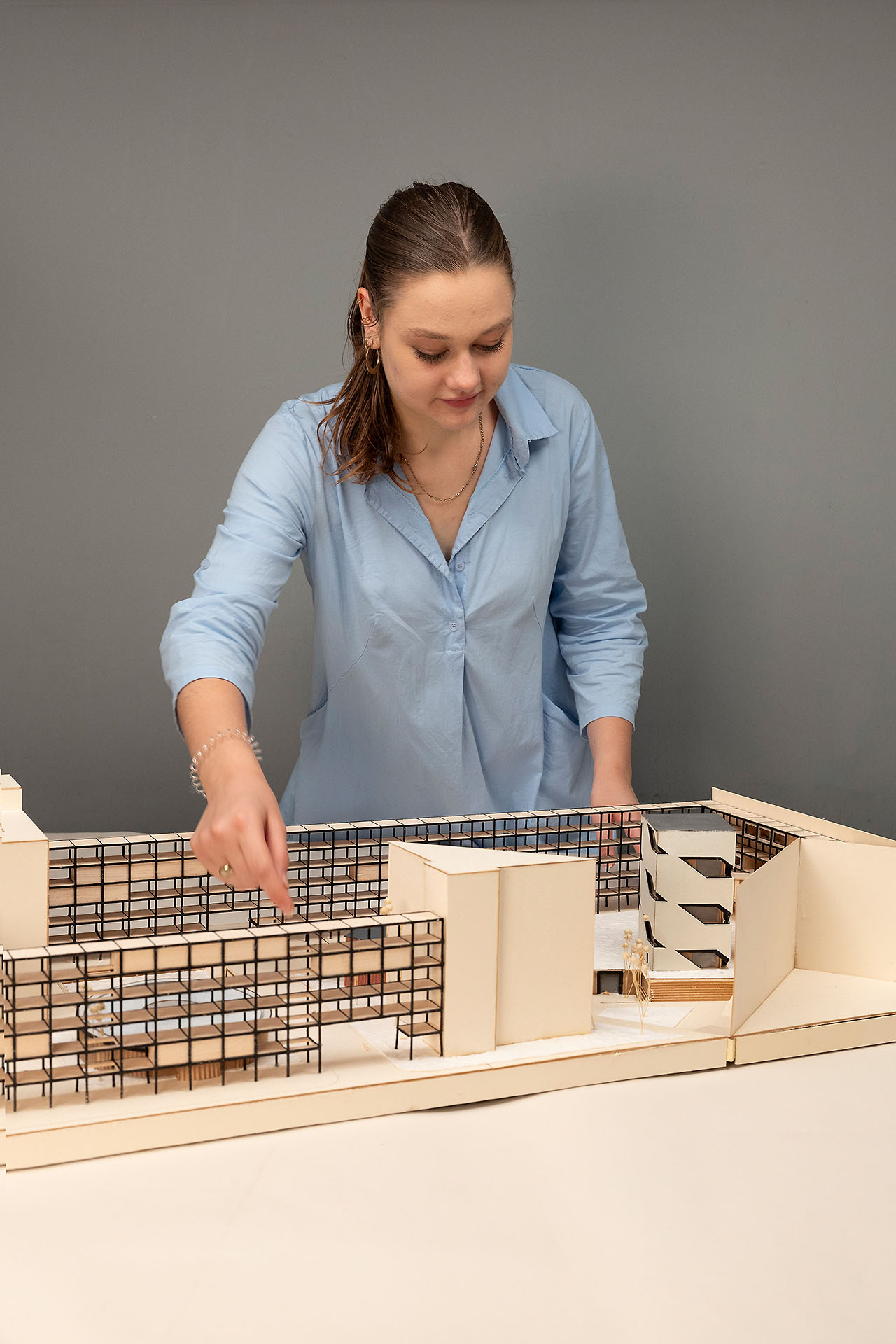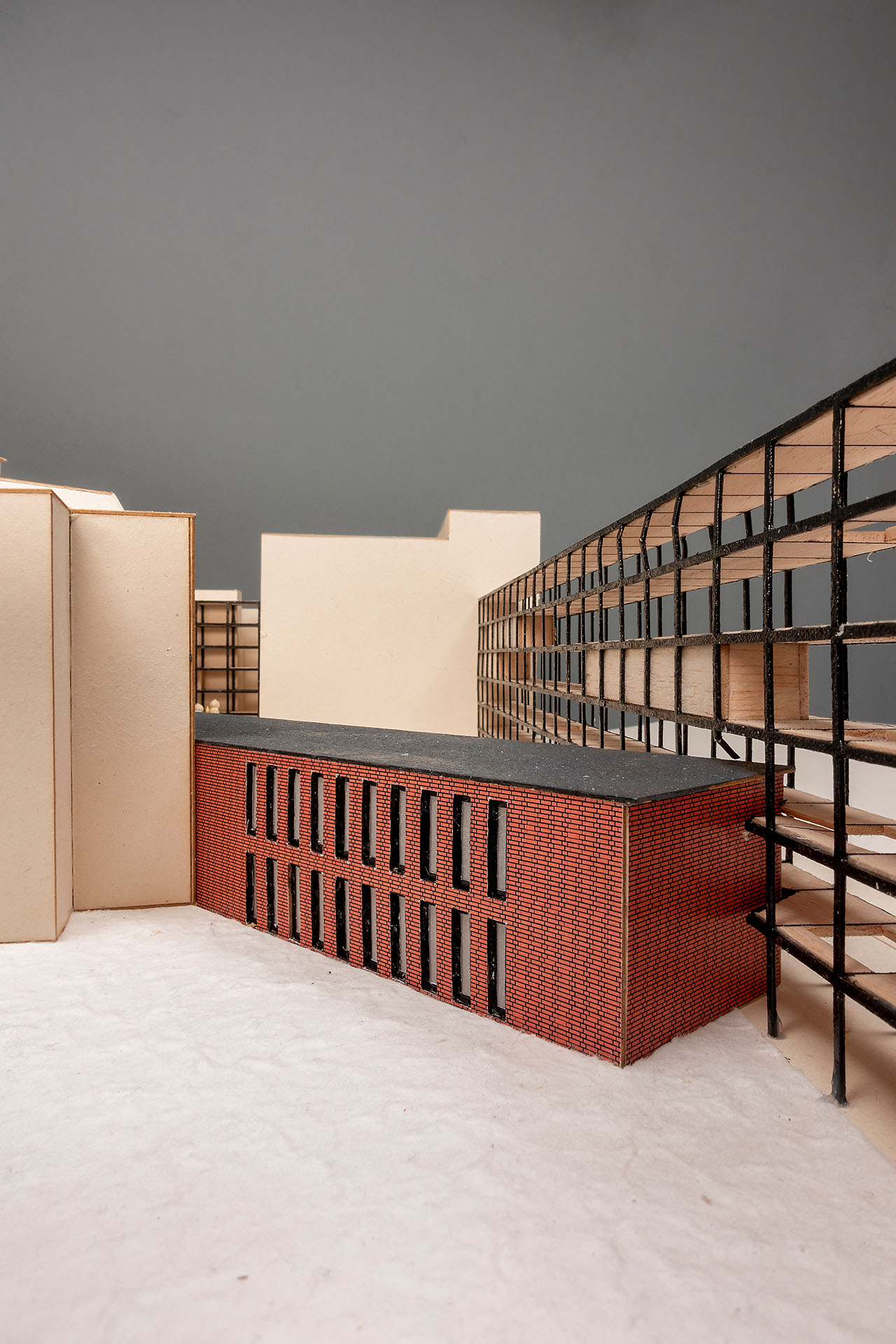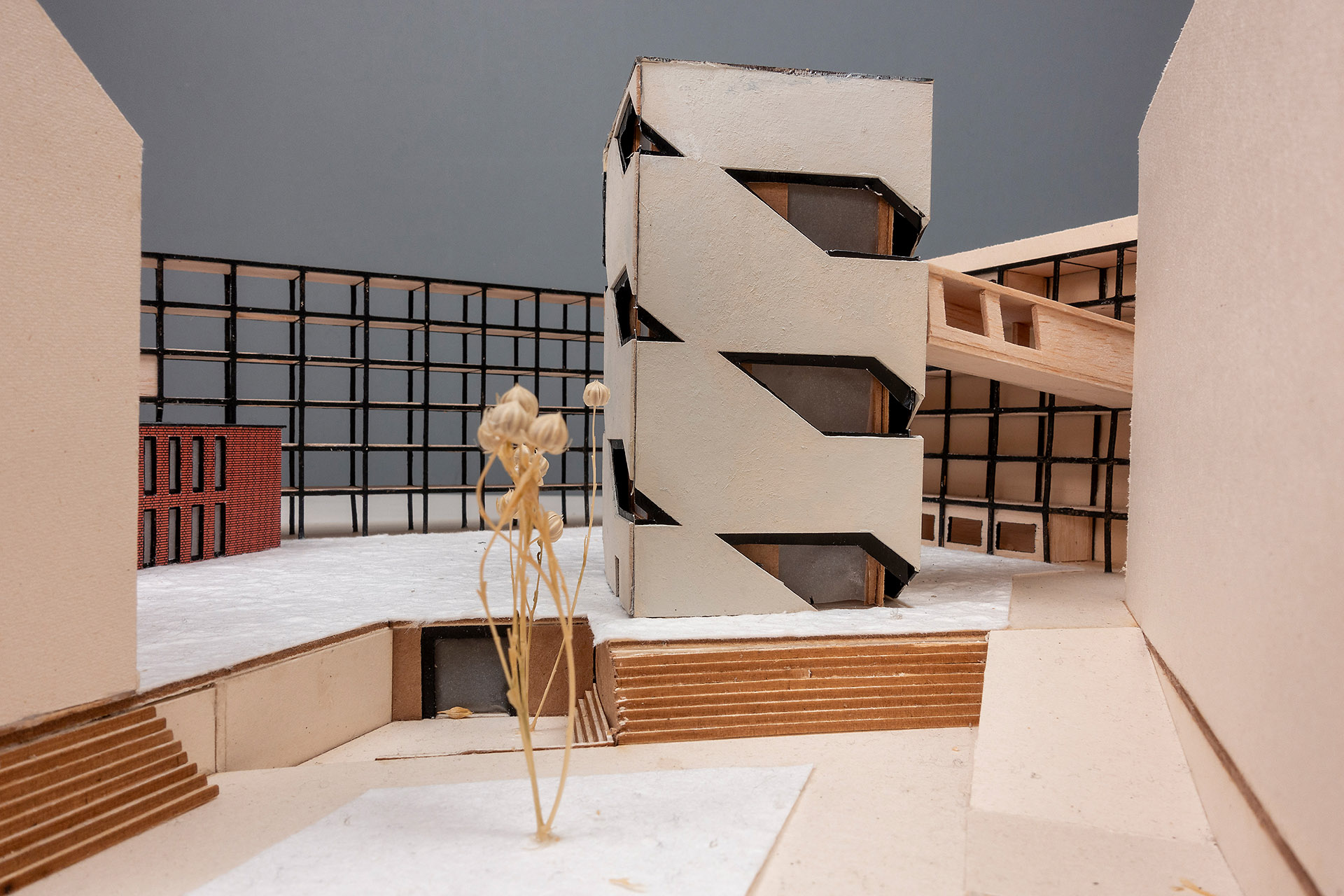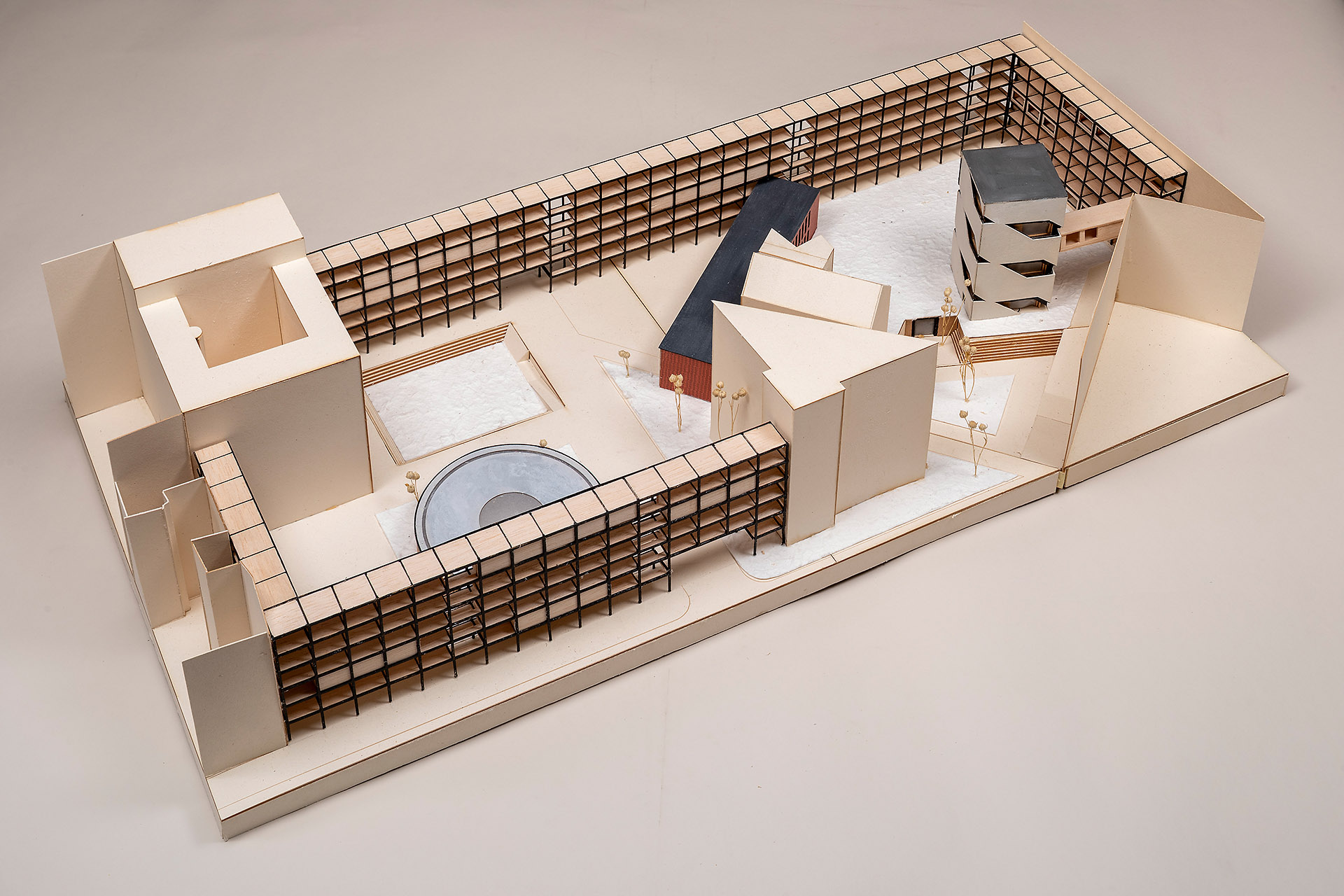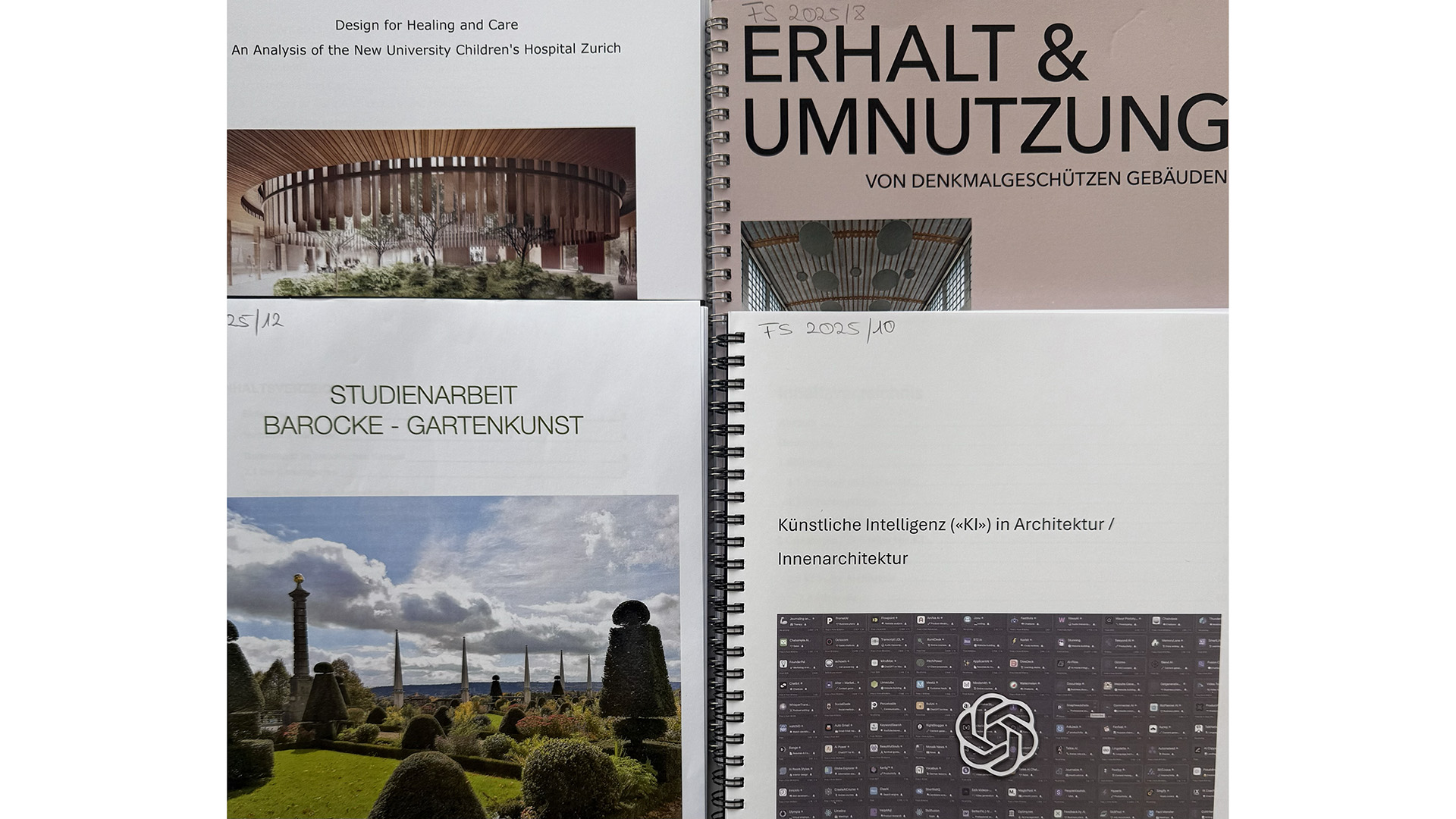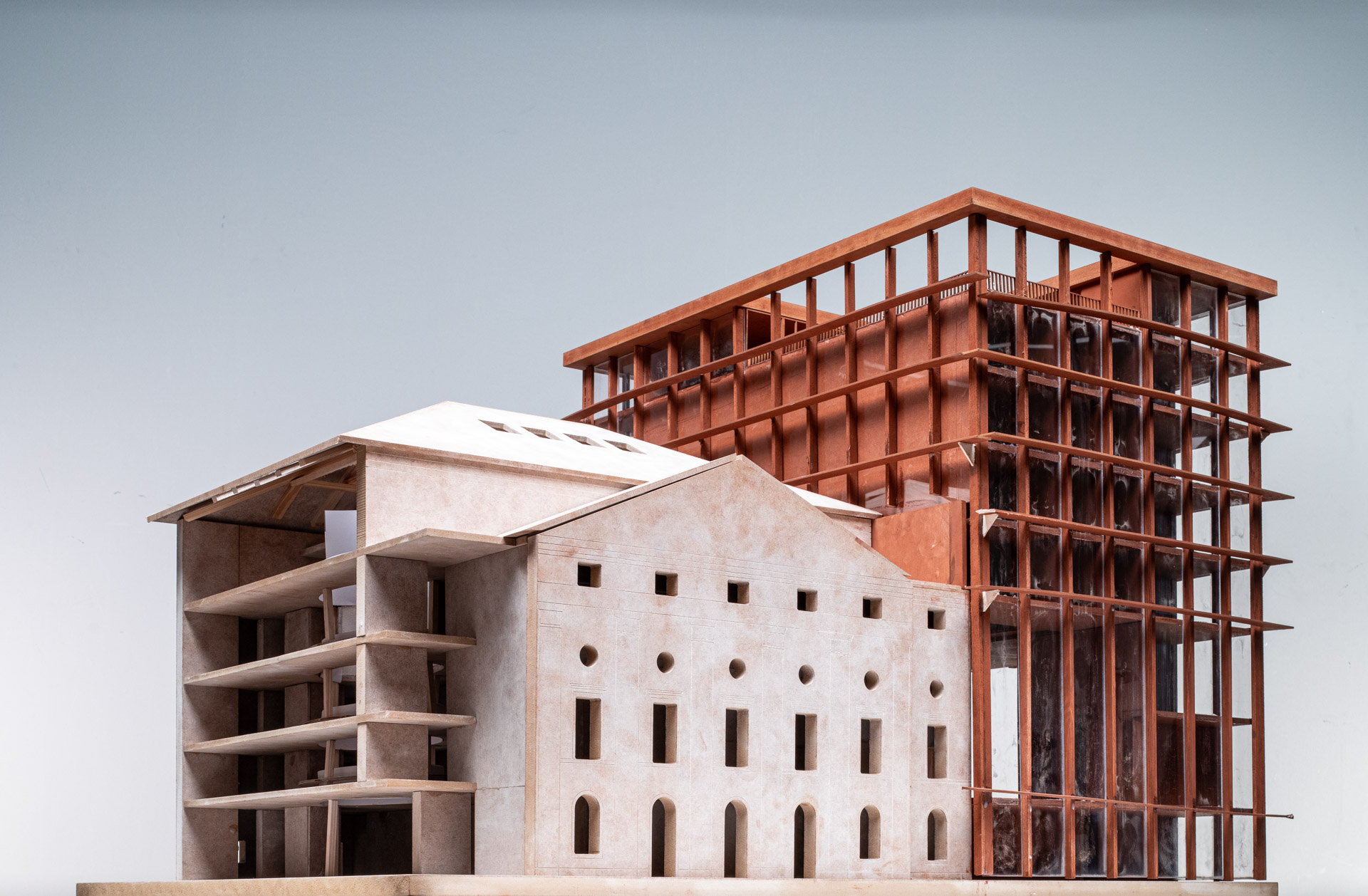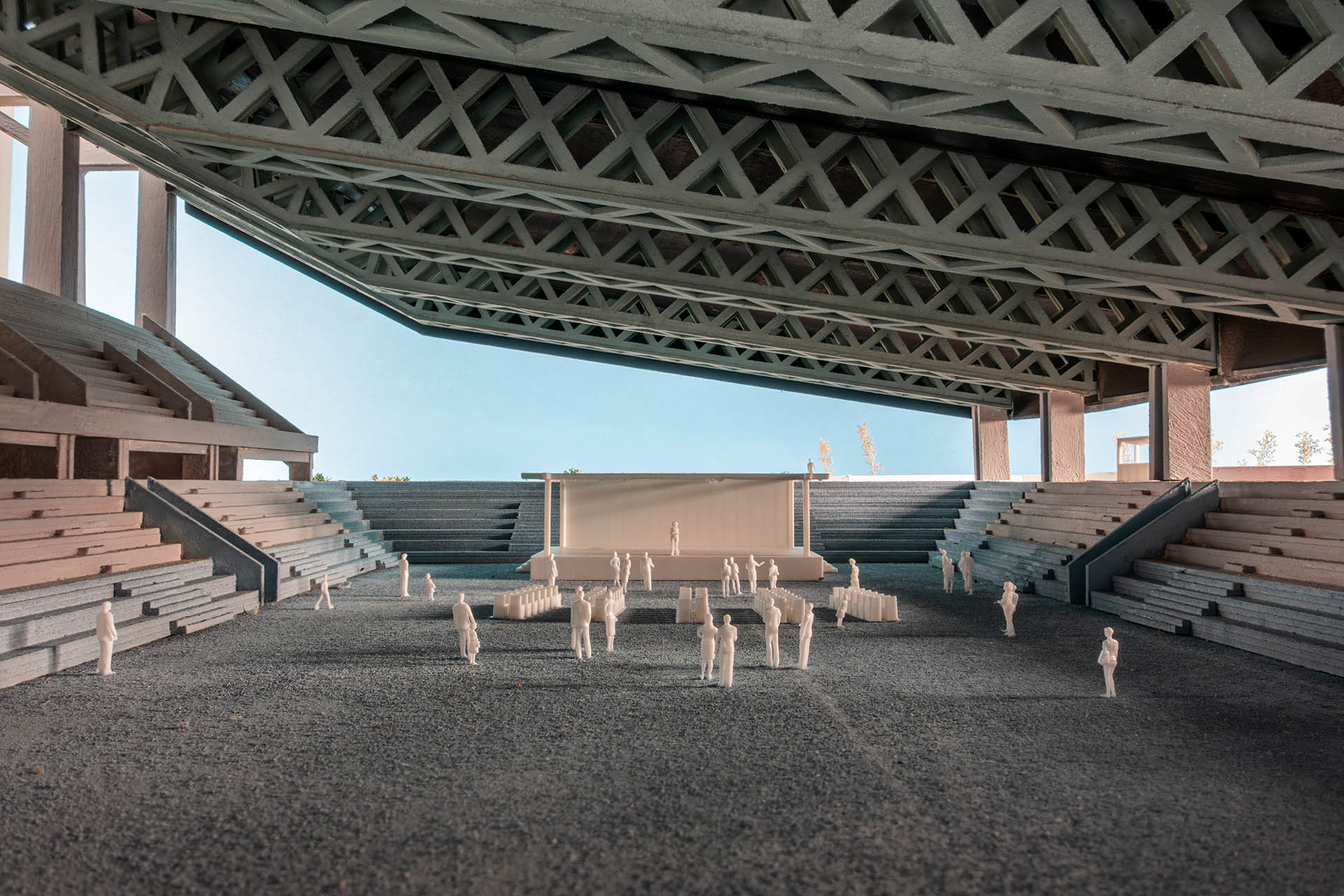The city is wilder than you think
Checkpoint Charlie between memory and future
In the Spring semester 2023 the Master Studio «Architecture & Structure» collaborated with the «In-depth Study» module. The focus of the Studio was the city of Berlin and the era around the fall of the wall.
Hardly any European city has been more radically transformed in its recent history than Berlin. And it has happened several times – the crucial events to be emphasized are the destruction by the Allied forces at the end of World War II, the division of the city in the post-war era and the period around the fall of the Berlin Wall.
The end of the 1980s was a turning point. From a historical perspective, the fall of the Berlin Wall ultimately led to the collapse of the Soviet Union and hence to the end of the Cold War. The students worked on an emblematic site where the wall once stood: Checkpoint Charlie. Astonishingly, several plots have remained vacant in this central point in the inner city.
Ingnasi de Solà-Morales has described the fascination of vacant urban spaces and coined the term «terrain vague» for them to express the poetry of such spaces. The void is also a frequent theme in contemporary photography, as in the work of Thomas Ruff, Thomas Struth and Gabriele Basilico, for example. In these seemingly abandoned spaces, the memory of the past seems stronger than the present. Its existence and presence are not subject to the economic and functional rules of the city. In times when density and increasing density seem to be maxims of urban development, we are convinced that voids and abstention are part of the vocabulary of urban planning, especially in Berlin. Too much is being overbuilt, reconstructed and augmented.
Taking a participatory dialogue process conducted very recently by the city of Berlin, as well as the resulting development plan for the area, as our starting point, the students sought to engage critically with a historically important place in the fabric of the city. Traces and memory play just as much a role as the search for the identity and meaning of the city of the future. With regard to the structural and commercial decline of the central part of the city around Potsdamer Platz and Friedrichstrasse, the city of the future can scarcely rely on memory and education. It is necessary to develop scenarios to bring urban life back to this place.
Project by Elise Snick
This project reimagines Checkpoint Charlie as the site for a new central library of Berlin, blurring the boundaries between city and building, and interior and exterior. The urban void is literally framed by a large-scale, scaffold-like structure built along the exposed fire walls. This structure forms an orthogonal enclosure which superimposes a sense of strict Euclidian order on an otherwise chaotic situation – without aiming to erase it. Within this enclosure, the different elements of the brief, including an auditorium, offices and media library, are housed within ideal volumes (cylinder, cube, etc.), which – perhaps paradoxically – seem to find their place in this large public space with the apparent looseness and disorderliness of the original condition of the site.
